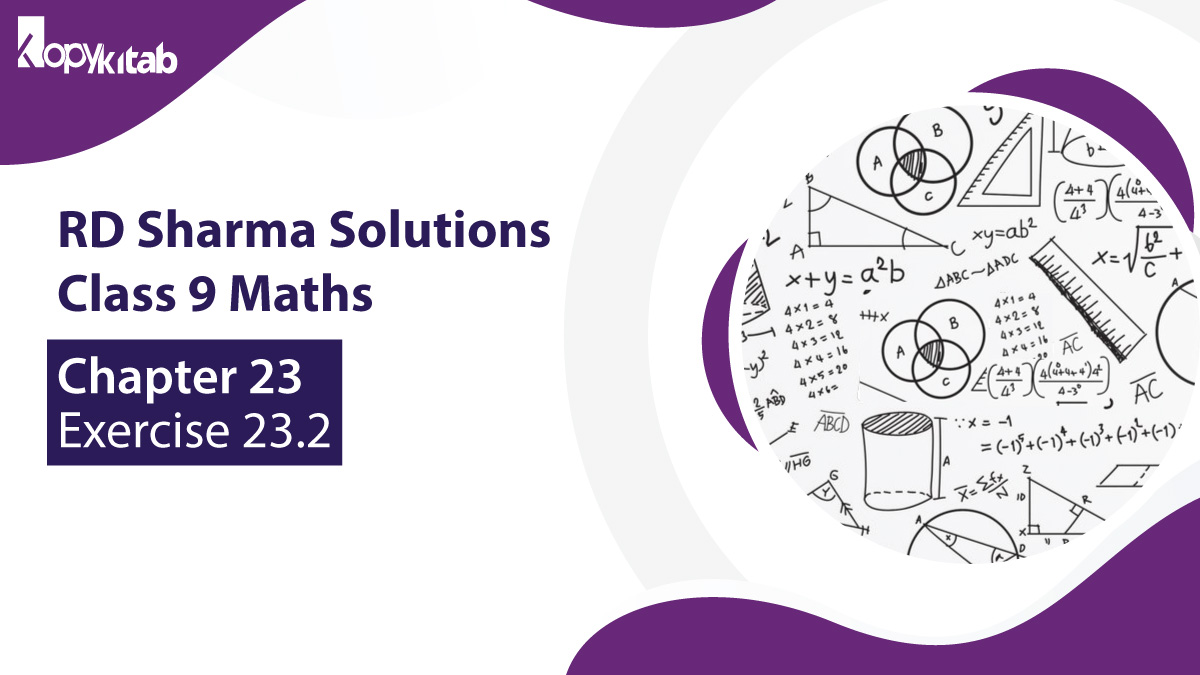RD Sharma Chapter 23 Class 9 Maths Exercise 23.2 Solutions Graphical Representation of Statistical Data is basically coming from the construction of bar graphs. It helps tests the knowledge of students regarding different bar graphs. It brings clarity to their concepts regarding the construction of the graphs.
Those uninitiated, bar graph primarily is a pictorial representation of the data provided in numerical form in the form of bars of numbers of equal width standing vertically or horizontally, with uniform spacing between these. The best part about the bar graphs is that they provide the simplest way of studying and analyzing big data or details around it.
RD Sharma Chapter 23 Class 9 Maths Exercise 23.2 Solutions can benefit the students in this context. It enables them to learn the concepts well and practicing the same. The easy and stepwise representation makes things more useful for the students. Practicing these questions can boost the fundamentals and hilt over bar graphs significantly.
At the same time, making things easier, it is useful for students in terms of solving problems quickly.
Learn about RD Sharma Class 9 Chapter 23 (Graphical Representation of Statistical Data)
Download RD Sharma Chapter 23 Class 9 Maths Exercise 23.2 Solutions PDF
Solutions for Class 9 Maths Chapter 23 Graphical Representation of Statistical Data Exercise 23.2
Important Definitions RD Sharma Chapter 23 Class 9 Maths Exercise 23.2 Solutions
This exercise is based on the Construction of Bar Graphs. Go down and see the import definitions with examples.
Bar Graph
It is the easiest representation of data, one between the other graphs. A bar graph is a graphical description of the data in the form of rectangular bars or columns of the same width.
Properties of Bar Graph
- Each bar or column in a bar graph is of the same width.
- Every bar has a constant base.
- The height (top) of the bar corresponds to the value of the data.
- The distance among each bar is equivalent.
Construction of a Bar Graph
- Draw two (2) perpendicular lines crossing each other at a point P. The vertical lines are the y-axis, and the horizontal is the x-axis.
- Pick a suitable scale to plot the height of each bar.
- On the horizontal line, draw the bars at the same distance with corresponding heights.
- The space among the bars should be similar.
Examples of RD Sharma Chapter 23 Class 9 Maths Exercise 23.2 Solutions
Ques: Explain the study and interpretation of bar graphs.
Solution: A bar graph consists of a sequence of vertical or horizontal bar rectangles or lines. Bar lines can be either horizontal or vertical. We can easily accumulate the information and conclude several observations from a given bar graph, which is associated with the interpretation of the bar graph.
Ques: Read the stated bar graph and answer the following questions-
(A) What information is given through the bar graph?
(B) In which year the export is least?
(C) In which year the import is highest?
(D) In which year the difference of the values of export and import is highest?

Solution:
(A) The bar graph depicts the import and export (in 100 Crores of rupees) from 1982-83 to 1986-87.
(B) 1982-83
(C) 1986-87
(D) 1986-87
Ques: The following bar graph presents the results of an annual exam in a secondary school. Read the bar graph mentioned below, and choose the correct alternative in each of the following:
(A)The pair of classes in which the outcomes of boys and girls are inversely proportional is-
(i) VI, VIII (ii) VI, IX (iii) VII, IX (iv) VIII, X
(B) The class having the lowest failure rate of girls is-
(i) VI (ii) X (iii) IX (iv) VIII
(C) The class having the lowest pass rate of students is-
(i) VI (ii) VII (iii) VIII (iv) IX

Solution-
(A) Option (ii) is correct.
(B) Option (i) is correct.
(C) Option (ii) is correct.
The sum of heights of the bars for boys and girls in class VII = 95 + 40 = 135 (which is minimum)
